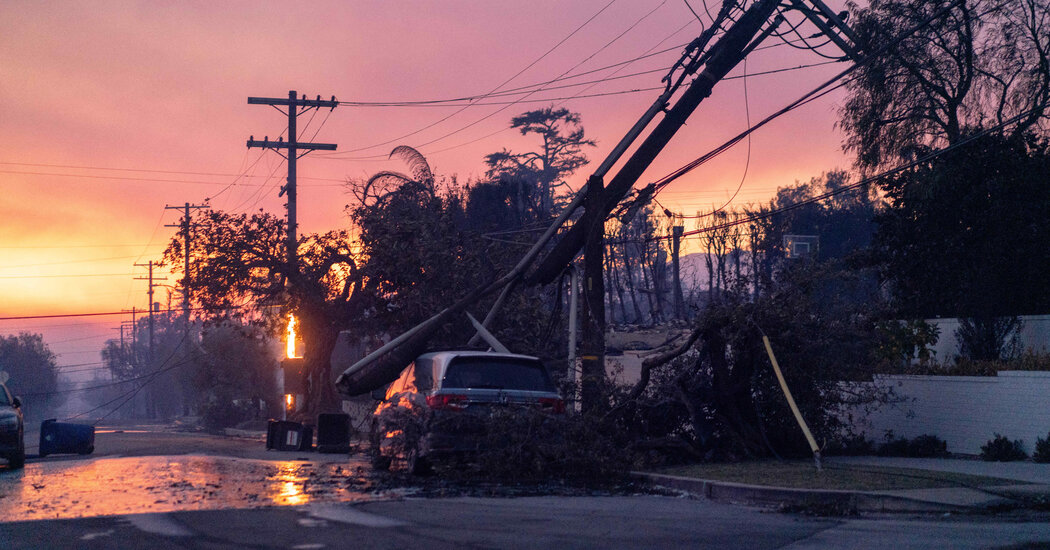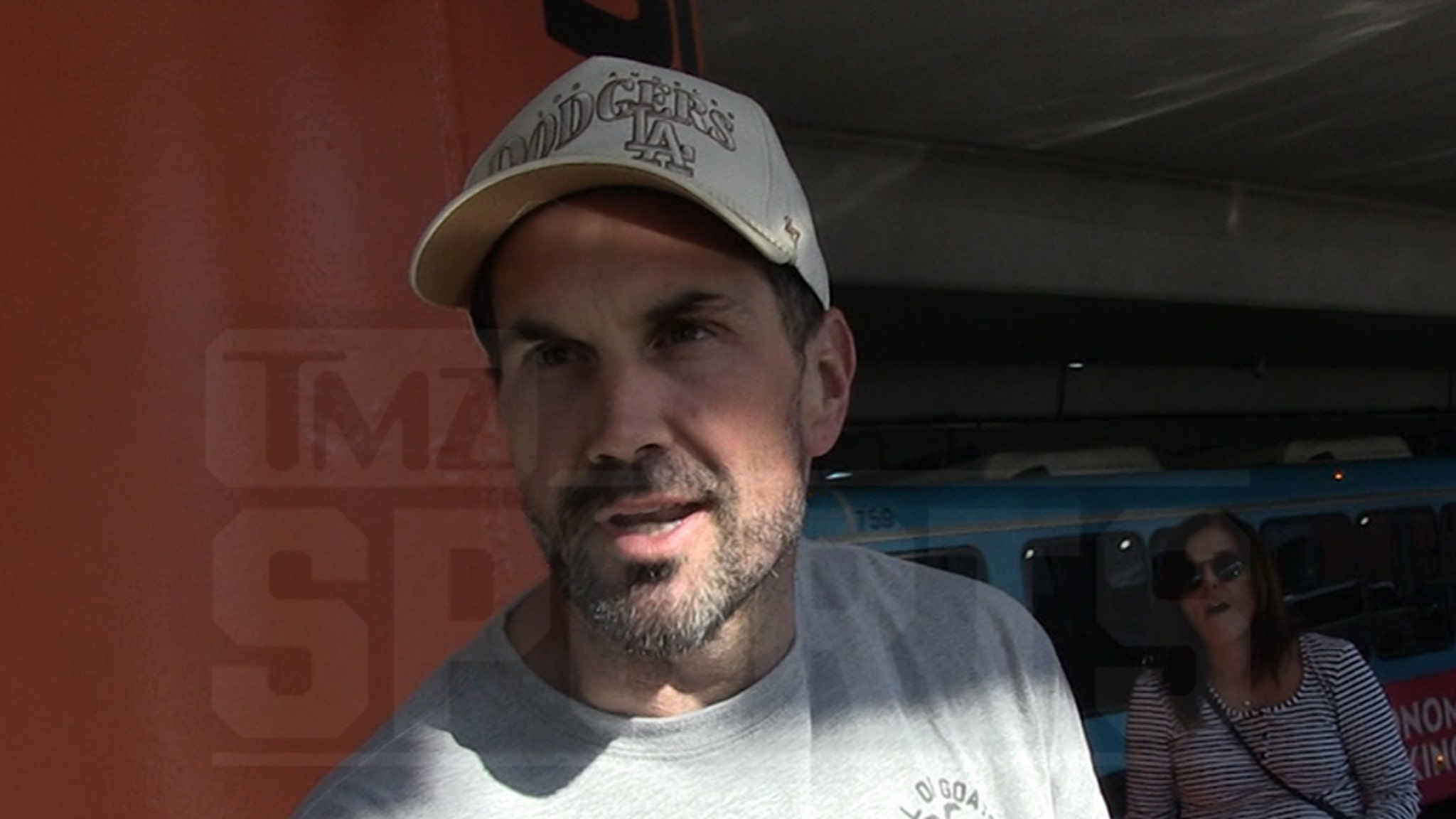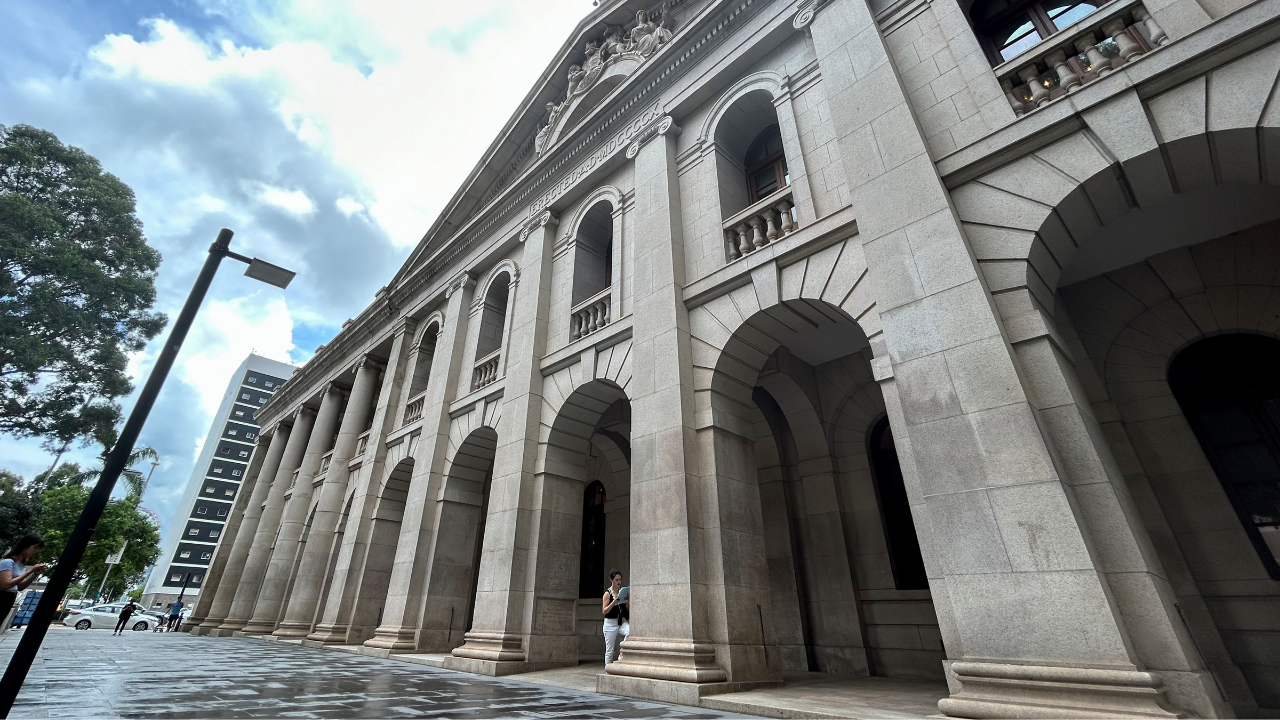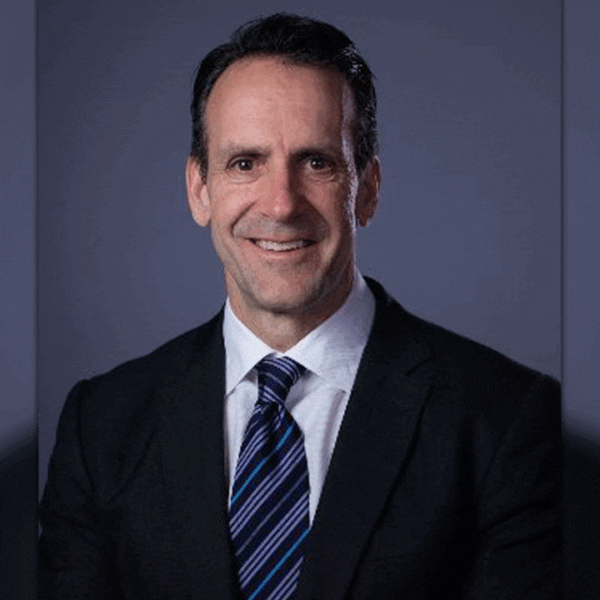Power lines near the Eaton and Palisades fires in the Los Angeles area were on when those blazes started on Tuesday, which energy experts said was concerning because electrical equipment has often ignited infernos during periods of high wind in California and elsewhere.
It is not clear what ignited the fires ravaging Southern California, and investigators are likely to take months to come to any firm conclusions. But the fact that utility lines stayed on during unusually dry and very windy conditions suggests they could have played at least some role in spreading the fires, energy industry experts said.
Power lines and other utility equipment have been identified as the cause of several major fires in recent years, including California’s most deadly, the 2018 Camp fire, which killed 85 people and destroyed the town of Paradise. Other fires that were linked to electrical equipment include the 2023 fire in Maui, Hawaii, and a 2020 blaze near Oregon’s coast.
One of the most concerning details to emerge since the fires began is that the Los Angeles Department of Water and Power, the largest municipal utility in the country, does not have a program in place to pre-emptively shut off power in urban areas when fire risk is elevated. California’s investor-owned utilities have had such programs in place for years.
The city’s utility, which serves the Pacific Palisades enclave, where most homes have been destroyed, does not use remote power shut-off systems to cut off electricity to customers, according to an analysis of the department’s fire prevention plan by Robert McCullough, an electric utility consultant based in Portland, Ore. He described the utility’s plan as “woefully inadequate.”
“L.A.D.W.P.’s documents are primarily public relations with little of the advancements in wildfire prevention and response seen throughout the industry,” Mr. McCullough said.
The city’s water and power department said it did not use pre-emptive shut-offs during high wind because of potential impact on government agencies and other vital services. But the utility does prevent circuits from automatically powering back up after an outage or disruption during high winds. In such cases, utility crews manually restore power after conducting inspections of the area to make sure it is safe to do so.
Mr. McCullough also noted that the utility’s electric grid was designed to withstand wind speeds of up to 56 miles per hour, which he said was “quite low in today’s climate.” The utility, he said, is upgrading to equipment that withstands 80 m.p.h., but data “strongly implies that older poles and conductors were failing at less than 80 m.p.h.” during this week’s wind storms. The Santa Ana winds that have whipped Los Angeles this week have reached speeds of around 100 m.p.h.
In response to questions about its response, the department of water and power acknowledged that it did not cut power in advance of the fires in the city despite the wind speeds. The utility said it had developed a strategy with the city’s Fire Department to fit the needs of Los Angeles.
“L.A. is different: It is highly densely populated and has fewer power lines in the highest fire risk areas,” the utility said in a written statement on Friday. “Impacts to critical city services, including emergency response, the ability to fight fires, traffic and streetlights, as well as impacts to vulnerable people at home, are risks of widespread power outages, as are hospitals, dialysis centers and care centers.”
The city department said it was reviewing the ability of its system to handle higher wind speeds. The utility added that it had replaced 704 poles in areas that were at a high risk of fires in 2022-23.
Los Angeles’s municipal utility is not unusual in its reluctance to cut off power as a fire prevention measure. Other major California utilities have much more detailed wildfire prevention programs — like Southern California Edison, which operates equipment in the area of the Eaton and Hurst fires. But they have also been reluctant to shut off power, which is often unpopular with customers and elected officials, to prevent wildfires and see the measure as a last resort.
As many as half a million Edison customers were under consideration for power shut-offs at various times this week, but fewer than half of those ever had their electricity deliberately shut off at any one time.
Data released on Friday by Whisker Labs, a Maryland technology company that maintains sensors that can detect abnormal activity on power lines to predict and prevent electrical fires, showed that utility equipment near the starting points of the Palisades, Hurst and Eaton fires remained energized as winds ripped through the Los Angeles area.
In the case of the Eaton fire, low-voltage power lines that feed homes with Altadena addresses, as well as high-voltage transmission lines west of where the blaze started, remained on before and during the start of the fire, Whisker Labs’ chief executive, Bob Marshall, said.
David Eisenhauer, a spokesman for Edison, criticized the findings of Whisker Labs as a firm attempting to market a product that electric utilities have evaluated but found “not useful or accurate in identifying the cause or source of any potential issues.” For example, Mr. Eisenhauer said, the increase in abnormal activity on the grid is likely related to the impact of the wind speeds in the area, rather than particular problems.
“Misleading the public by speculating on the cause of the catastrophic fires that are still raging through Southern California is wildly inappropriate and unhelpful to the community and our customers,” Mr. Eisenhauer said. “We should be focused on the facts and supporting the safety of our neighbors.”
Southern California Edison, which operates electrical equipment in the area where the Eaton fire is believed to have started, said it had cut power to customers to the east of the ignition point under its wildfire prevention program, but it did not say whether low- or high-voltage lines to the west were shut off.
In an incident report that Edison filed Thursday evening, the utility said it had received notices from lawyers representing insurance companies related to the Eaton fire to preserve evidence. But the power company added that “to date, no fire agency has suggested that S.C.E.’s electric facilities were involved in the ignition or requested the removal and retention of any S.C.E. equipment.”
With damage from the Los Angeles fires estimated in the tens of billions of dollars, the potential liability that the two utilities face could prove overwhelming. The Palisades fire is the worst in Los Angeles history.
“The system that was built was never designed to anticipate this,” said Martin L. Adams, a former general manager at the Los Angeles utility who worked for the agency for 40 years. “It’s a different world, because things we thought would never happen are happening.”
Mikal C. Watts, a lawyer in Austin, Texas, who has represented wildfire victims in California and Hawaii, said he had been receiving information and images that suggested utility equipment as a possible cause of the fires. Mr. Watts said he had received a steady stream of phone calls from wildfire victims, including dozens of friends, seeking to represent them in cases stemming from the fires.
In the Palisades fire, Mr. Watts said, he was investigating a broken utility pole and downed wire along Temescal Ridge Trail. He said he believed the city department of water and power and Edison had both failed to take steps to prevent these fires, given the wind storm forecasts.
“There was clear warning that this was coming,” Mr. Watts said.















